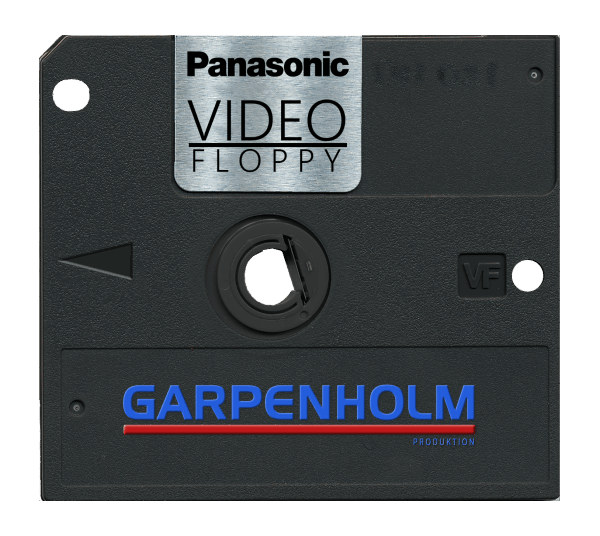
Panasonic NV-VF50P
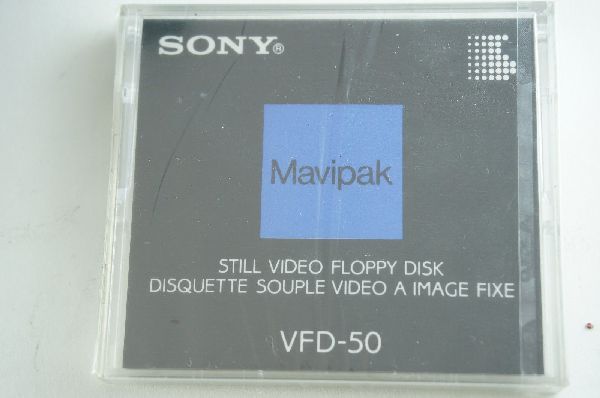
Sony VFD-50 case
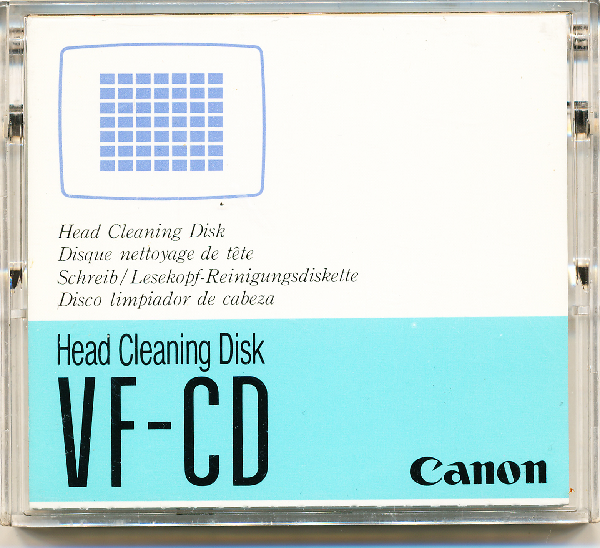
VF-CD cleaning disk

TDK VF-1

Casio FQ-10
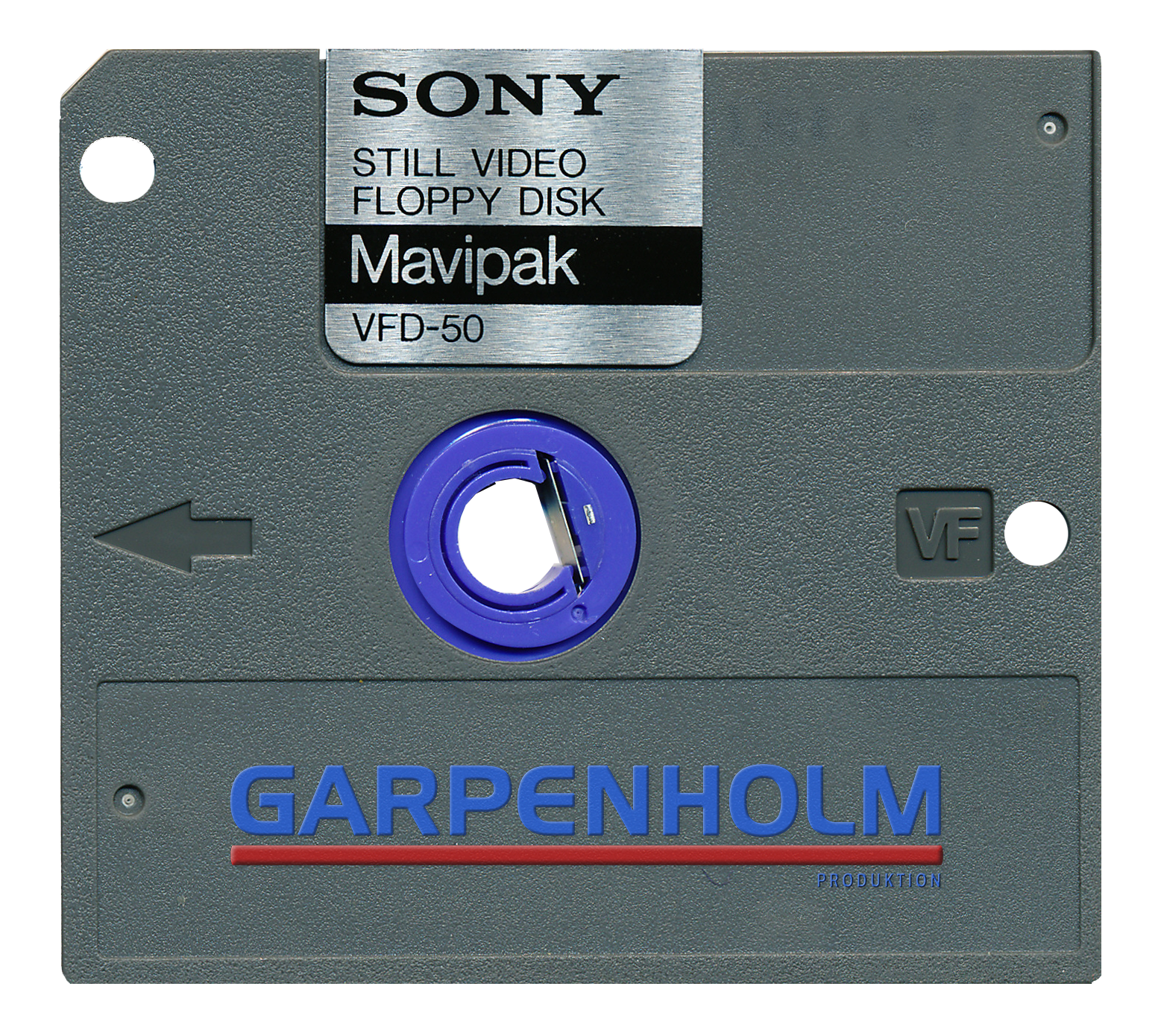
A Video Floppy Disk is a video storage medium in the form of a 2" magnetic floppy disk used to store still frames of analog composite video. A video floppy, also known as a VF disk, could store up to 50 field images or 25 full frames either in the NTSC or PAL video standards. Some brands also provided a short audio track with each video image.
The obvious limitation is that the playback system is roughly equivalent to the operation of a paused video recorder. Since the video is stored as a conventional video frame in a format such as NTSC or PAL, the resolution is limited to that of any other video. And since the images are not stored digitally, transferring the photos to a computer requires a video capture card.






Introduction to Video Floppy Disks
The Video Floppy Disk, often referred to as a VF disk, was a significant storage medium in the 1980s and 1990s. It was a 2" magnetic floppy disk used to store still frames of analog composite video. The VF disk was primarily used in still video cameras and video floppy disk players.:
Technical Specifications
The VF disk was a double-sided medium, with each side capable of storing 25 frames (in the case of full-frame storage) or 50 fields (in the case of field storage). However the most cameras only used one side of the disk limiting the maximum number stored field images into 50 per disk.
The disk was divided into tracks, with each track capable of storing one frame or two fields. The disk was read and written using a magnetic head, similar to other magnetic storage mediums like floppy disks and magnetic tapes.
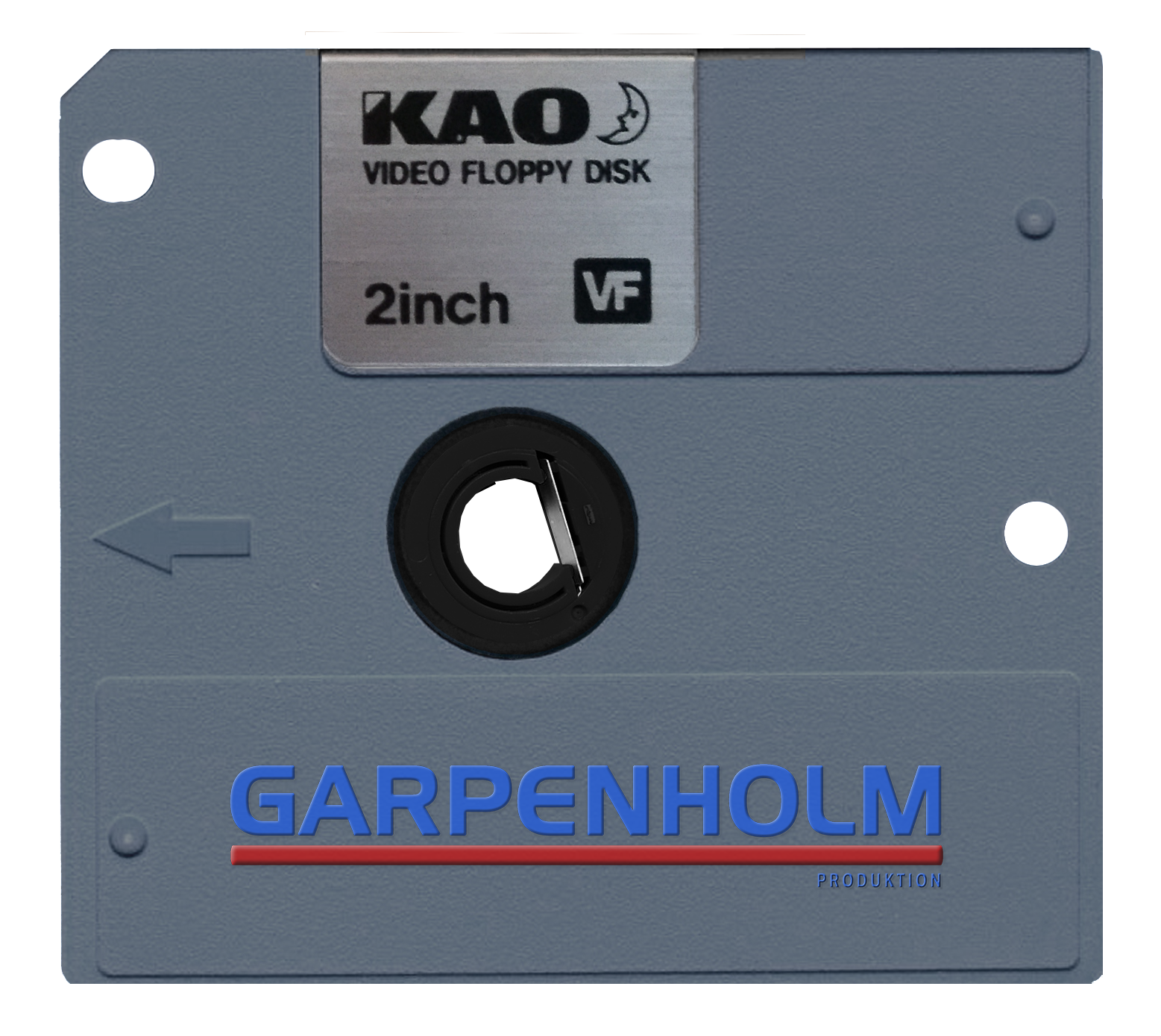
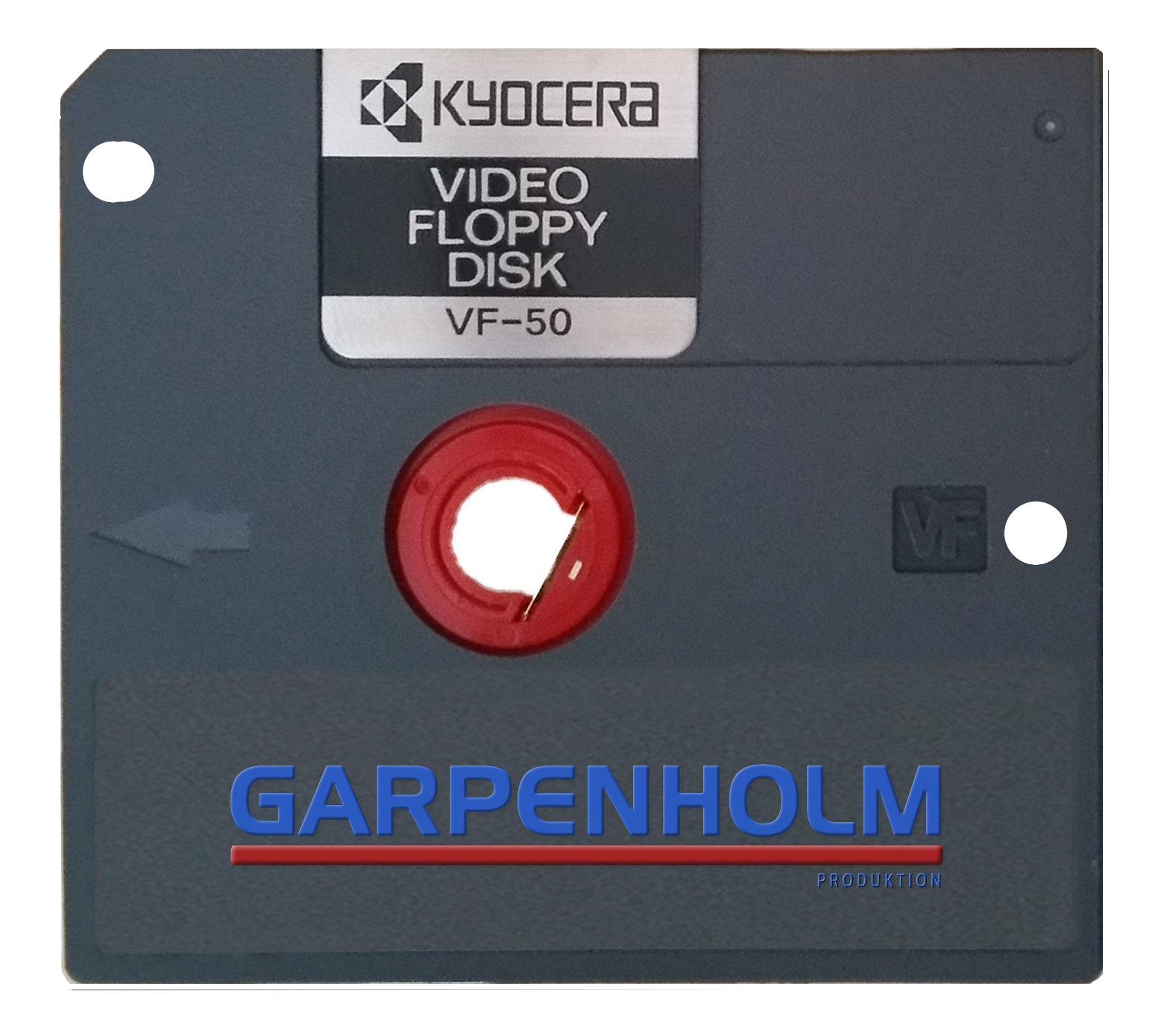

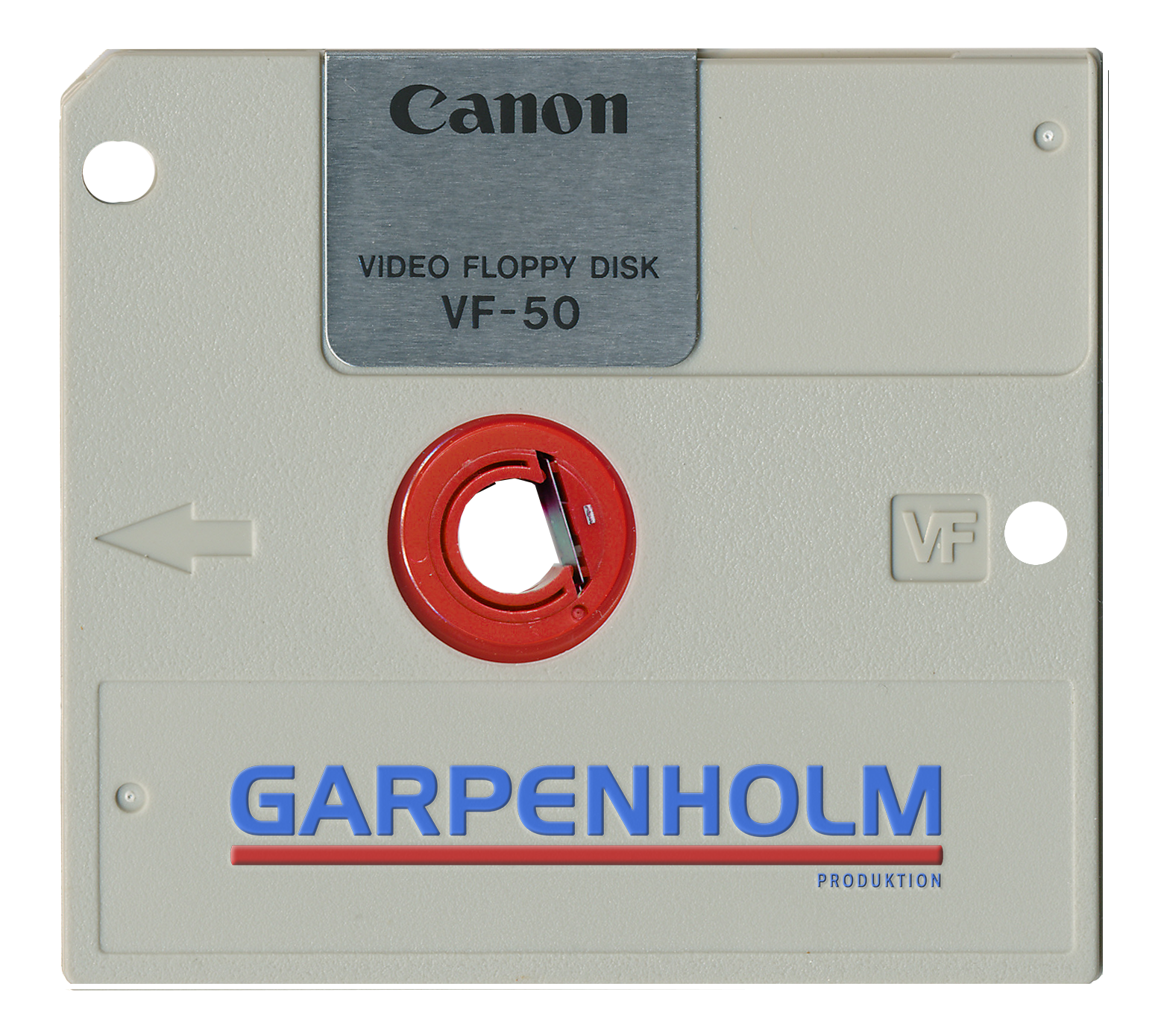


Resolution and Image Quality
The resolution of the images stored on a VF disk was limited to that of the NTSC or PAL video standards. NTSC has a resolution of 720 x 480 pixels, while PAL has a resolution of 720 x 576 pixels. However, because the images were stored as analog video, the effective resolution was often lower due to factors like noise and signal degradation.
The images were stored as conventional video frames, which means they were interlaced. Interlacing is a technique used in analog video where each frame is divided into two fields, each containing every other line of the image. This was done to reduce flicker and increase perceived video quality, but it also meant that each field had only half the vertical resolution of the full frame.
Playback and Transfer
The playback system of a VF disk was similar to the operation of a paused video recorder. Since the video is stored as a conventional video frame in a format such as NTSC or PAL, the resolution is limited to that of any other video. And since the images are not stored digitally, transferring the photos to a computer required a video capture card. This was a significant limitation, especially as digital storage mediums became more common.
Usage and Applications
VF disks were used in a variety of applications. They were popular in medical imaging, where they were used to store images from procedures like endoscopies. They were also used in video production for storing still frames, and in security systems for storing surveillance footage. Some early digital cameras also used VF disks as their primary storage medium.
Obsolescence and Legacy
The VF disk format became obsolete with the advent of digital storage mediums that offered higher capacity, better quality, and easier transfer of images. Digital storage also allowed for more advanced image processing and editing, which was a significant advantage over the analog VF disk format.
However, the VF disk format was an important step in the evolution of video storage technology. It represented a transition from the purely analog world of videotape to the digital world of today. It also paved the way for the development of digital cameras and other devices that capture and store video digitally.
Today, the VF disk format is largely obsolete and is rarely used in modern applications. However, there are services available that can convert the analog video images stored on VF disks into digital formats. These services provide a valuable service by preserving the images stored on these disks and making them accessible in today's digital world.
In conclusion, while the Video Floppy Disk format may seem primitive by today's standards, it was a significant technological achievement in its time. It played a crucial role in the history of video storage and paved the way for the digital technologies we use today.